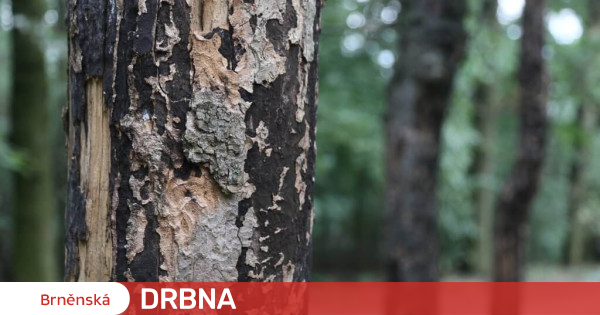Researchers from the metropolis of South Moravia focused on tree diseases brought to Europe from the United States. According to them, soot disease caused by fungi can spread through the air for hundreds of kilometers. The spores most commonly attack the bark of maple trees, but can also affect human health.
When the first cases of sooty tree disease appeared in European countries after the Second World War, not even experts knew about this pathogen for decades. In just the last twenty years, due to warmer weather and climate change, the disease has spread across nearly the entire continent. The spread of the pathogen, which thrives in hot, dry summers, is being studied by scientists from the University of Brno, who are measuring how far these noxious mold spores can travel in the air.
These organisms live in trees for many years before surfacing. The fungus grows through the center of the stem and when the time is right, it reaches its end down to the bark layer. Inside, it then forms a fruiting body, a black mass several decimeters to meters wide called the stroma, which is visible after the outer skin has been torn off.
“At that time we can observe the most characteristic symptom of the presence of this fungus, a black-brown layer of soot or spores, which, as we know, can travel hundreds of kilometers thanks to air currents,” explained Milo Dvořák from the Institute for Forest Protection and Hunting at Mendel University in Brno.
Maple bark peeler
The spores easily attack other greenery that has exposed the wood in any way. Maple is the most susceptible to this dangerous disease. But people also have to be careful. While it may not harm healthy people, it can cause hypersensitivity pneumonitis in sensitive people. If not treated, sufferers can even die.
They recorded similar cases in the 1940s in North America, where they also first described mushrooms. Until recently, the disease was called maple bark lung and was included in the International Classification of Diseases.
All of Europe
Experts in South Moravia along with colleagues from France, Switzerland, Italy, Portugal and Sweden embarked on an arduous journey to study the movement of this pathogen. After going through a complicated process where only five-year-old samples were available to them, they came up with some interesting results. Laboratory diagnostics confirmed the occurrence of the so-called Cryptostroma corticale throughout the European continent.
This disease is also troubling foresters on the west coast of the United States, for example in Washington and California. Therefore, Dvořák is developing a dispute capture tool. Together with American experts, they will build an inexpensive, small but specially designed mold machine that will allow them to control the spread of spores.
“For monitoring to make sense, the traps had to be placed over a large area, and since a standard volumetric trap costs more than a hundred thousand crowns, we agreed to this procedure,” enlarged.
The unknown
However, researchers do not yet have answers to a number of other questions. Similar black spores are produced by another fungus that inhabits dead maple trees. According to Dvořák, this may also be one of the reasons why scientists have neglected this fungus for so long.
“We thought black meat was something we’d known for a long time. But the difference, for example, is in the color of the spores. On maple bark soot, it is not pure black but black-brown, forms a thicker layer of stroma than other fungi, and is released into the air on contact. Just a gust of wind and dark clouds rising from the trees.” he added.
The only way to protect trees from this disease is to increase the awareness of forestry officials and reforestation managers, especially in urban areas. The pathogen enters the maple tree mainly through mechanical damage to the bark. “In large cities, trees suffer the most damage, for example from insensitive arboricultural interventions, or conversely in abandoned ruminants altogether, where maple trees spontaneously rejuvenate and compete fiercely for moisture available in the stands. too dense.” conclude.

“Certified bacon geek. Evil social media fanatic. Music practitioner. Communicator.”







